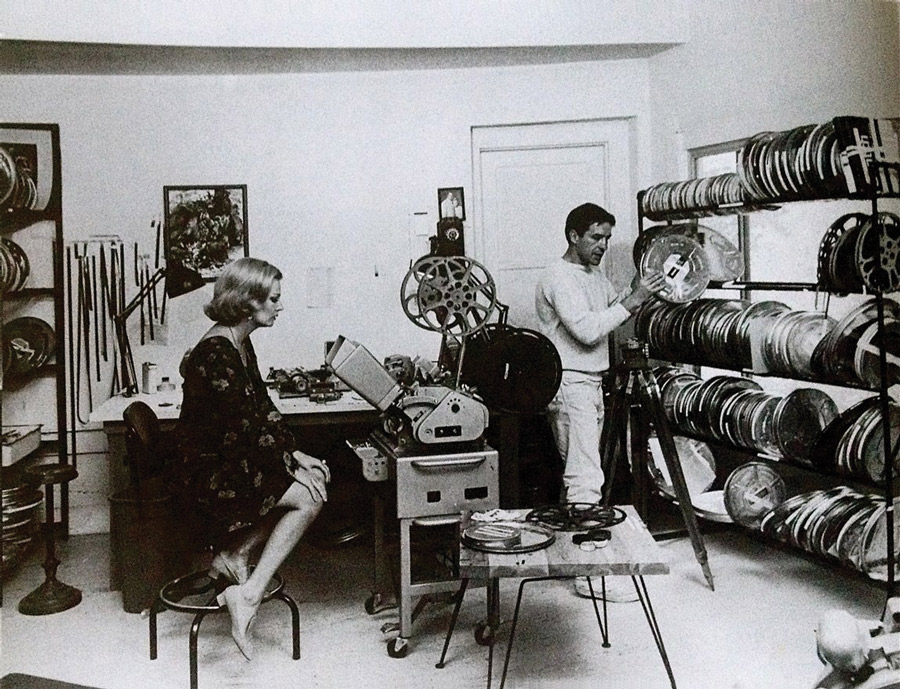A Woman Under the Influence (1974) is an impressive study of madness and conformity, serving as one of the benchmark films of American independent cinema. The film’s maverick director, John Cassavetes—best known for Rosemary’s Baby (1968) and The Dirty Dozen (1967)—often shot his films in a hand-held style known as cinema verité, in which the camera functions like a fly on the wall in order to mimic a real-life viewing experience. Due to its rawness and emotional power, the film is often assumed to be improvisational or unscripted, yet Cassavetes always carefully wrote and directed his own projects. To mirror a convincing reality and provide his work with a sense of authenticity, Cassavetes enjoyed scripting the familiar—in this case, the abrasions of daily living, and casting close friends and family members to play the roles.
Just as Woody Allen favoured actress Mia Farrow, Cassavetes demonstrates a particular fondness for Gena Rowlands, whose portrayal of Mabel Longhetti in A Woman Under the Influence resulted in an Oscar nomination. Mabel is a housewife who behaves in odd ways; her temperament is mercurial as she floats from moments of singing and humming in a little-girl manner to growwing annoyed, pantomiming and throwing indignant punches into open air. Her husband, Nick Longhetti, played by Cassavetes’ close friend Peter Falk, is initially the rational counter to Mabel’s antics, yet is subtly revealed to be just as crazy and volatile as his wife, existing at a seemingly perpetual bursting point. Cassavetes uses Nick as an archetypal male figure, leading to feminist interpretations that Nick embodies the repressive societal patriarchy suffocating the gentleness of the female spirit. Nick works in construction and enjoys yelling at people with his thick New York accent to maintain his macho self-assurance. Eventually, Nick sends Mabel away to a mental institution, and then welcomes her back six months later with a party that can only be described as unnervingly tense.
The film devotes much time to exploring the Longhetti family dynamic. Cassavetes is undoubtedly sympathetic to the rootless state of the middle class American housewife. Mabel’s social awkwardness and desire to fit in is embarrassing and difficult to watch, yet she is oddly charming. The couple’s three children run away from Nick and gravitate toward Mabel, perhaps due to her childlike nature and gentle femininity. When Nick is left to care for the kids while Mabel is away at the institution, he takes them out of school and loads them into his truck for a fun morning at the beach. Observing a gloomy mood, Nick yells unpleasantly: “We’re here to have a good time, let’s have a good time. Otherwise we go home!” The day ends with the kids rolling out of Nick’s truck drunk after guzzling beers that were left out for them to find, demonstrating that Nick is no better a parent than Mabel.
One particular attribute that is often overlooked, is the setup of the couple’s home. It is arranged like a soundstage, with guests flowing in and out like shuffling actors and the dining room transitioning into Nick and Mabel’s bedroom in the evening. The film itself can be seen as Cassavetes’ commentary on the theatrical nature of banal daily life. Mabel behaves in ways that embarrass Nick in front of guests. As she returns from the institution and still struggles to act according to social norms, Nick shouts: “Be yourself! Be yourself!”
In translation, Nick wishes for Mabel to participate in the rituals of small-talk. The irony of his demand is that, in reality, Mabel doesn’t have an inner selfhood. She is defined by her odd jumble of mannerisms and gestures that compose her failed public persona. The film wraps on an everyday scene of Nick and Mabel bringing dishes to the kitchen put to a harmonica-themed tune, almost as if a curtain was just briefly lifted on a play in progress.








